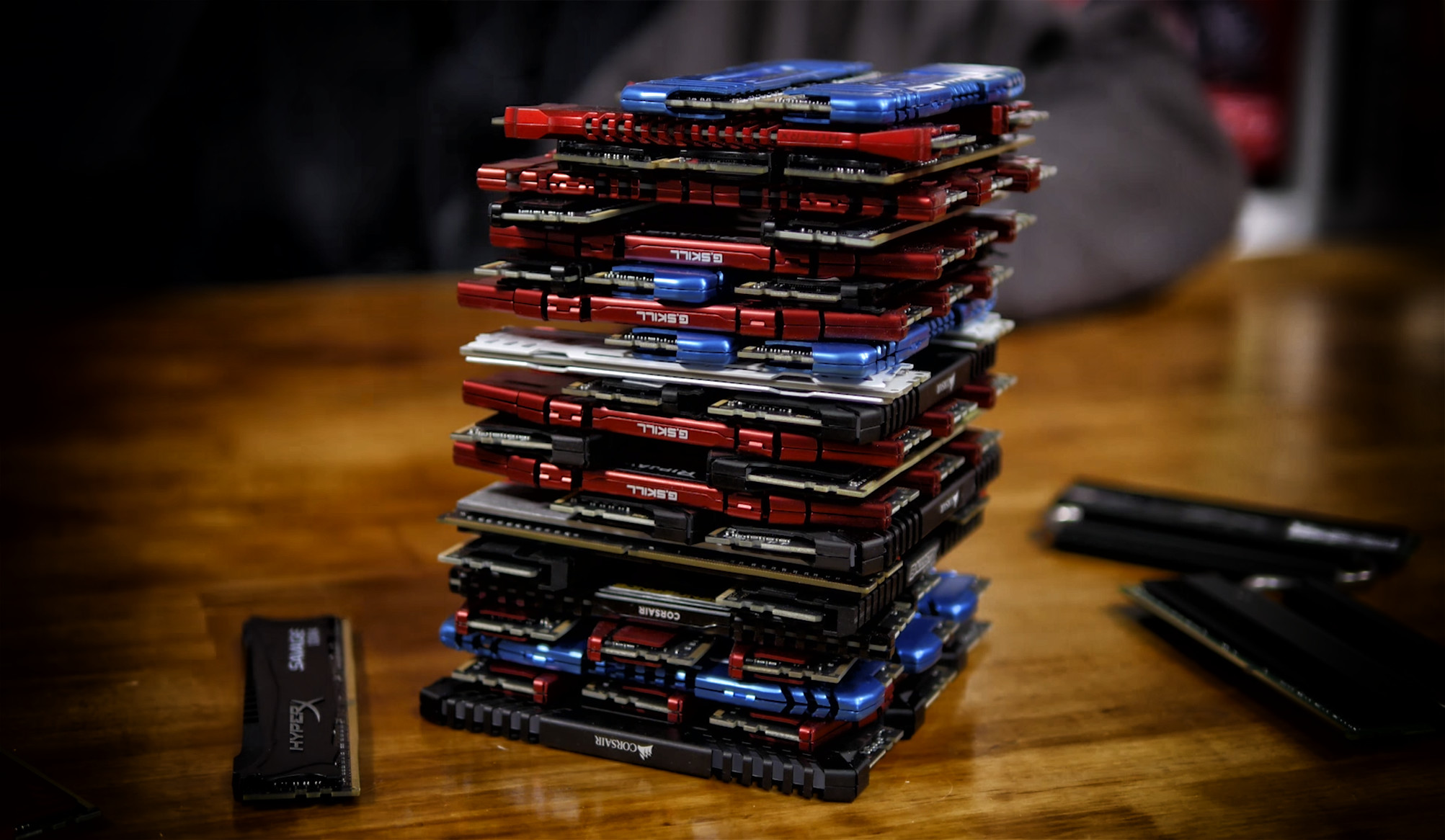The Benchmarks & Putting It All Together
We've looked at how much system memory is required by some of the more popular games released this year using with three different graphics cards. What we want to compare now is the 3GB and 6GB versions of the GTX 1060 to see how they differ with 4GB, 8GB, 16GB and 32GB of RAM. Again, we're using the Core i7-8700K and the memory speed and timings are the same for each capacity: DDR4-3000.
The only major difference being that we were forced to test the 4GB capacity with a single 4GB stick and this meant using single channel memory. We don't have 2GB of DDR4 memory and since we already know 4GB isn't enough we didn't waste any time or money to acquire a dual-channel kit. But still be aware of this.
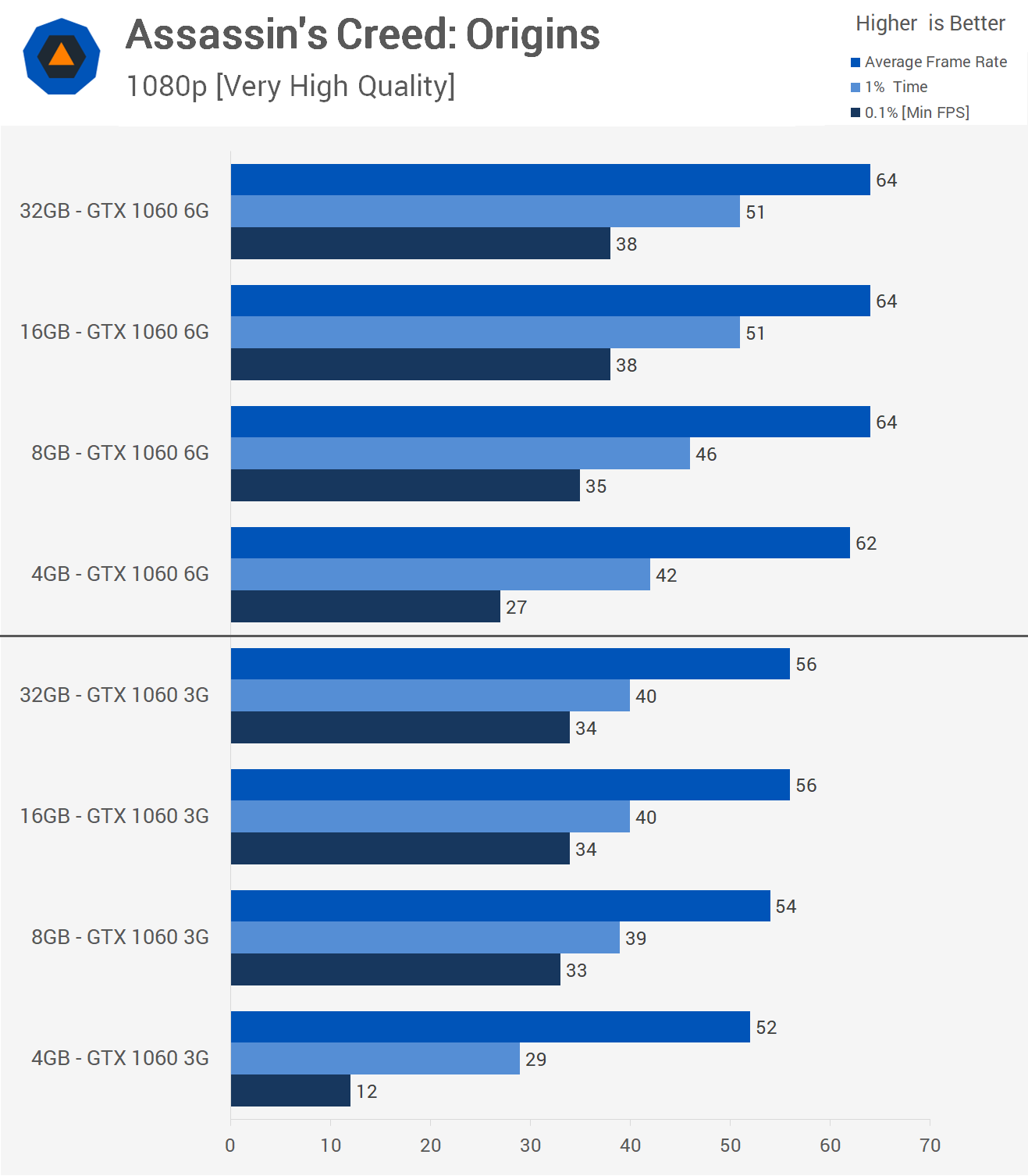
First up we have Assassin's Creed Origins and these results were recorded using the very high quality preset at 1080p. Starting with the GTX 1060 6GB, we see the 16GB and 32GB memory configurations allow for maximum performance to be extracted in this title.
Interestingly, while the same average frame rate is achieved with 8GB we see a noteworthy drop in the frame time performance – up to a 10% drop can be seen. With 4GB the system completely tanks and although the average frame rate looks good the game is now very stuttery as indicated by the 0.1% result.
Similar performance trends are seen in this title with the 3GB 1060. Surprisingly though, the impact the 8GB configuration has on performance is less severe – I was expecting to find the opposite. Anyway, we are seeing that for maximum performance you want 16GB while 8GB is the bare minimum.
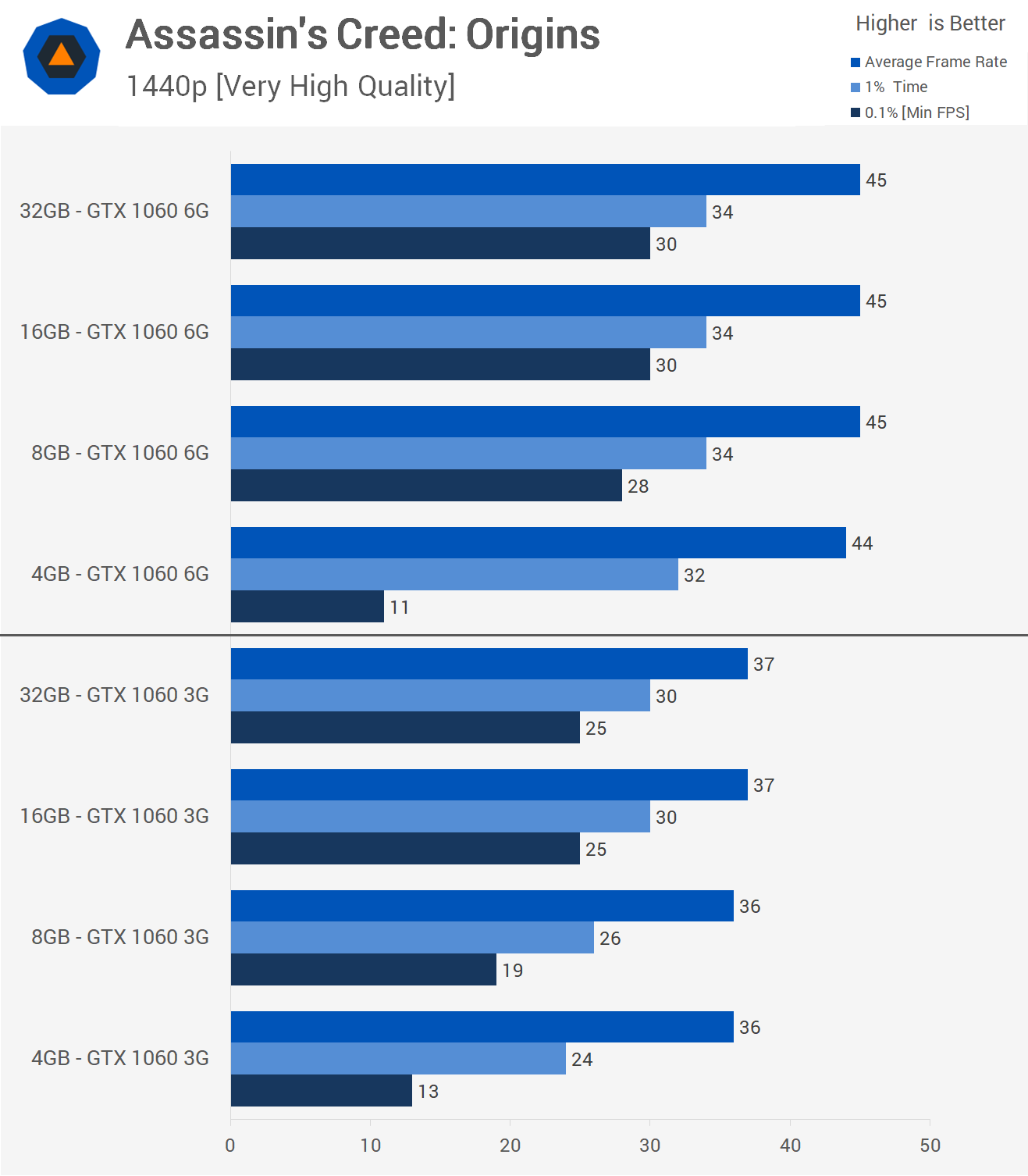
Jumping to 1440p we find that the 1060 6GB is now more limited by its own capabilities than the 8GB system memory capacity when looking at the 1% low result. That said, with just 4GB, the performance is now disastrous. At the higher resolution the 3GB 1060 takes a big hit with 8GB of RAM and things of course get even worse with 4GB.
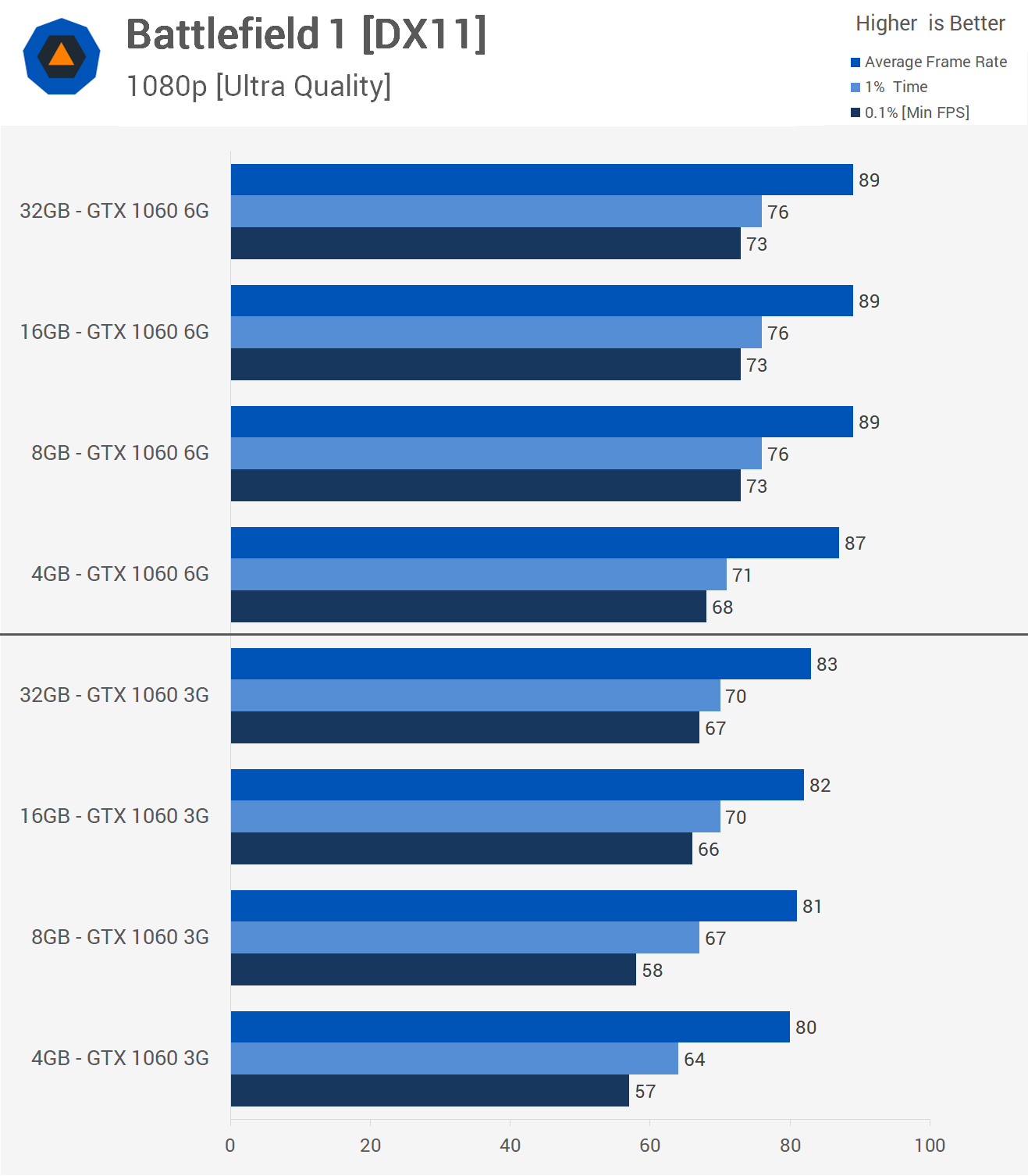
Next up we have Battlefield 1 and for these results I'm using the single player portion of the game as multiplayer can't be benchmarked accurately and is therefore useless for this kind of fps comparison. Here the GTX 1060 6GB was able to deliver the same performance with 8GB, 16GB and 32GB of memory. We only see a small decline in performance with 4GB which is surprising, though we are only at 1080p.
Using the 3GB 1060 does produce a major decline in performance with 8GB of RAM when looking at the frame time results. This is amplified further with 4GB, though again not as severely as I would have expected.
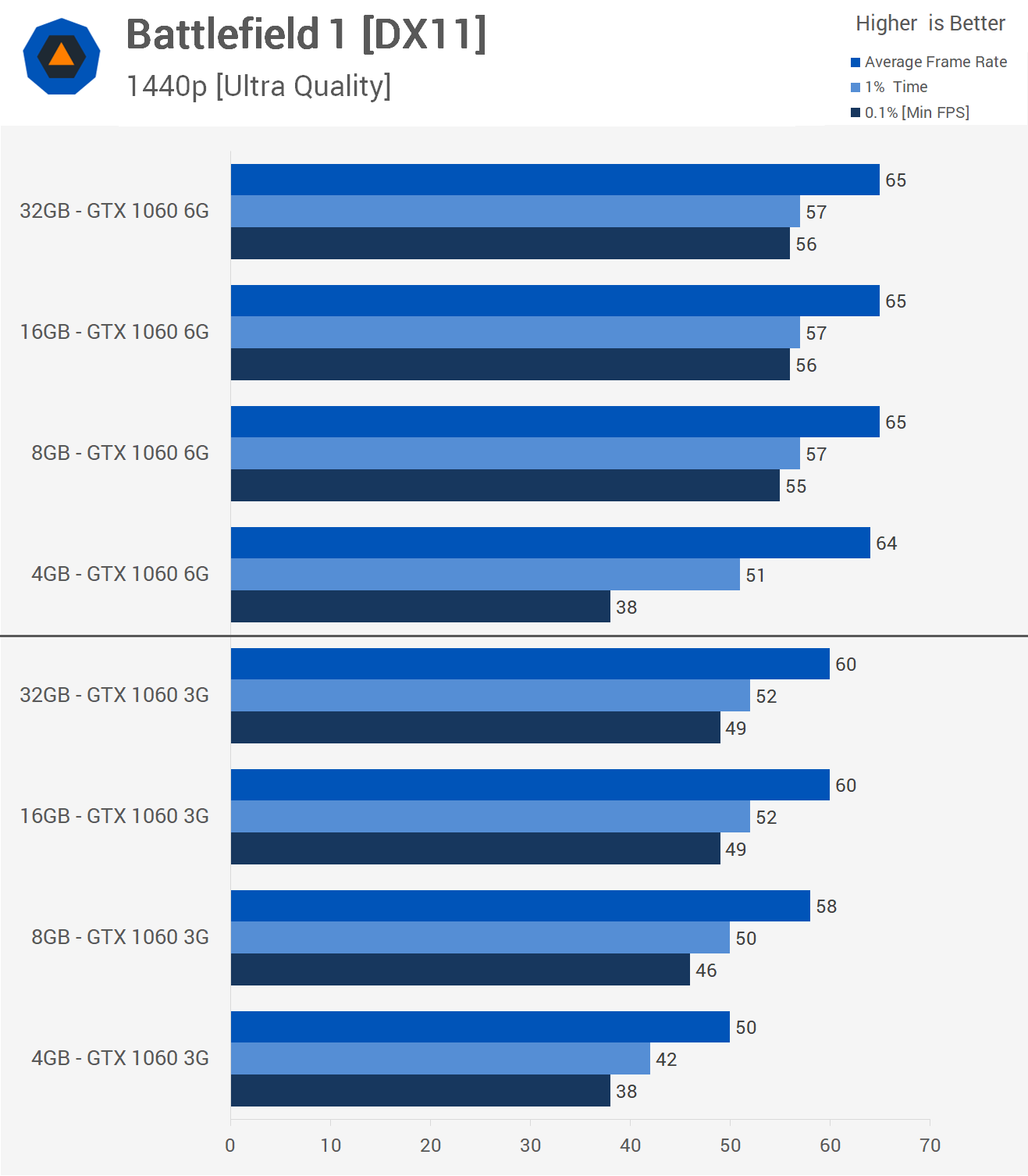
Increasing the resolution to 1440p resulted in the 4GB system memory capacity causing all kinds of issues with the 6GB 1060 – stuttering was quite noticeable. The same was found with the 3GB 1060 and we also saw a drop in performance with 8GB of memory.
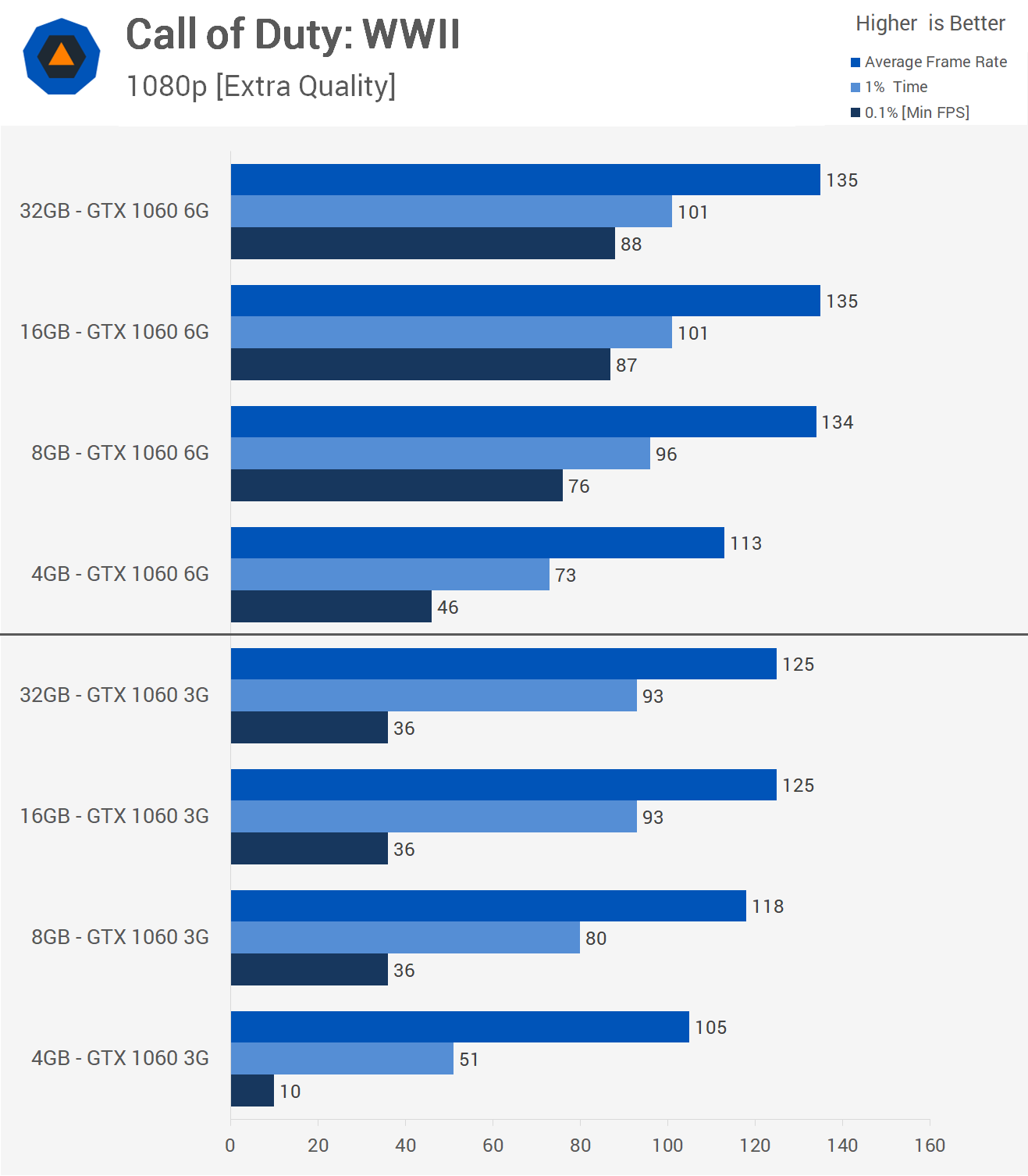
Finally, I decided to test with the ultimate memory pig, Call of Duty WWII. Using the GTX 1060 6GB we see that the 16GB and 32GB memory capacities allow for maximum performance. Dropping down to 8GB does tax performance, especially the 0.1% frame time result, which is now 13% lower. Using just 4GB was again a disaster and the game became completely unplayable.
The 1060 3GB on the other hand just doesn't have enough VRAM to play Call of Duty WWII at 1080p using the extra quality settings. That's not the end of the world and while some will make a big deal out of this, lowering a few select quality settings will improve things without taking much away from the game. Anyway, I'm not trying to defend the poor little 3GB 1060, I'm just noting it's a graphics card that comes with compromises in some titles.

Moving to 1440p and we now find an extreme scenario where the 6GB 1060 really struggles to maintain playable frame rates with just 8GB of system memory. Upgrading to 16GB makes a massive difference here while increasing memory capacity further has no impact. Obviously the 3GB 1060 is still a write off with the extra quality settings in play.
Putting It All Together
That's pretty conclusive evidence. For casual gamers, the bare minimum is still 8GB but there is plenty of evidence to suggest that the upgrade to 16GB will ensure smoother gameplay.
For serious gamers with mid-range to high-end hardware, we're almost at the point where we'd say 16GB the the minimal acceptable amount of system memory. Of course, as we said earlier, if you've invested over $1,000 in your GPU and SSD combo then chances are spending just shy of $200 to secure a decent 16GB DDR4 memory kit probably isn't something you're going to think twice about.
For GTX 1060 or RX 580 owners who've spent $200-$250 on their graphics card, dumping another $200 on DDR4 memory is something they're probably umming and ahhing about. If you're playing games such as Battlefield 1 or in particular Call of Duty WWII and you care about being competitive, then 16GB really is a must.
Alternatively, if you have a relatively high-end GPU such as the GTX 1070 or Vega 56 but play older, less memory-intensive games, then 8GB will no doubt be fine. But again, for these newer titles you'll ideally want 16GB.
We found it somewhat ironic that owners of the 3GB GTX 1060, a graphics card we've recommended for budget shoppers, will require 16GB of system memory to get the most out of today's games. So by saving around $50 on the GPU, you need to spend $90 more on system memory. That changes my perspective on things a little.
That said, we're probably being a bit unrealistic as 3GB GTX 1060 owners will be playing at 1080p with lower quality settings which are likely going to play nicely with an 8GB buffer.
In a nutshell, if you plan to play the latest PC games on good quality settings, 4GB of RAM is out, 8GB is the bare minimum, 16GB is the sweet spot and 32GB is overkill.
Shopping Shortcuts:
